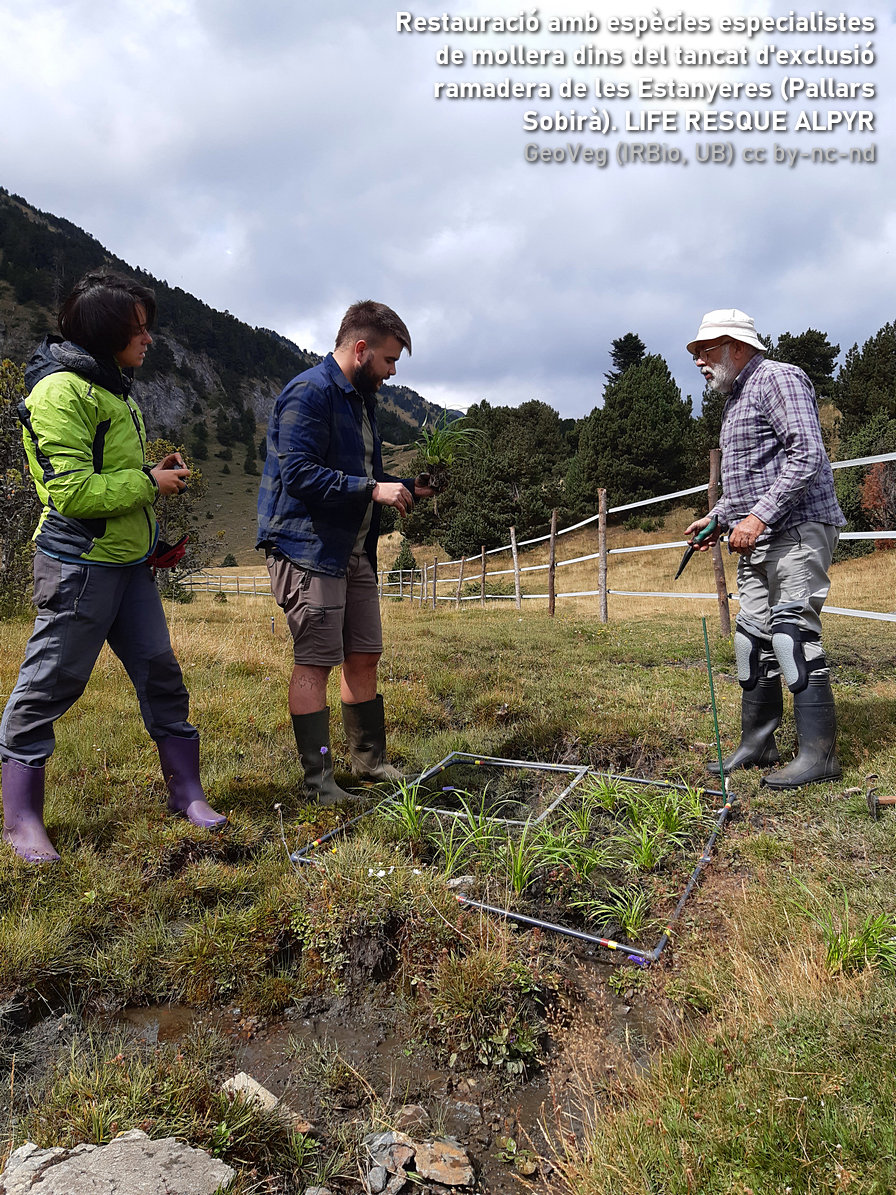Restoration actions to improve the state of conservation of the high mountain peatlands of the Catalan Pyrenees
The LIFE RESQUE ALPYR project wants to reverse the damage caused by livestock exploitation on peatlands.
The high mountain peatlands of the Catalan Pyrenees are noticeable for their unique biodiversity and the singular ecological processes they host. However, they face the threat of livestock exploitation, which in some places has caused significant damage to these delicate ecosystems. Although many of these peatlands are located within protected areas, their degradation continues in many places. In response to this urgent issue, the ambitious LIFE RESQUE ALPYR project has been launched, focused on concrete actions to restore and protect different high-altitude aquatic and semi-aquatic ecosystems. Among the ecosystems targeted by the project are the Estanyeres peatland, in Alt Àneu.
Types of restoration of high mountain wetlands.
The degradation of high mountain peatlands due to livestock farming is mainly due to large livestock, such as cows and horses. Their activity concentrates in certain places, causing the breakdown of vegetation, soil compaction and erosion. To combat these destructive processes and test possible restoration methods, the LIFE RESQUE ALPYR project uses two different approaches: passive restoration and active restoration.
Passive restoration involves excluding the livestock from part of the peatland, either all year round, or only during the spring and the first part of summer. This action allows the ecosystem to recover spontaneously, save from strong disturbances. As active restoration, the transplant of specialized plant species in damaged areas is used to begin the recovery process. Throughout the project, rigorous ecological monitoring is carried out to strengthen the scientific basis for effective ecological restoration.
The project
This project is a great collaborative effort in which a dozen Catalan and Italian institutions participate as partners. The general coordinator of the project is Dr. Marc Ventura, from the CEAB of Blanes (CSIC), a specialist in high mountain aquatic systems. The team from the University of Barcelona (UB) carries out the actions related to peatlands, led by Aaron Pérez. Other team members are also focusen in the ecology of high mountain vegetation, such as Josep M. Ninot, José Manuel Blanco, Eulàlia Pladevall and Víctor Lecegui , all members of the Biodiversity Research Institute (IRBio) of the UB. The project also includes as partners the Generalitat of Catalonia, Forestal Catalana and the wildlife management company Sorelló.
The LIFE RESQUE ALPYR project officially began in January 2022, with the clear objective of improving the conservation status of aquatic and semi-aquatic species and habitats in the Catalan Pyrenees. Specifically, the project develops at the Aigüestortes i Estany de Sant Maurici National Park and the Alt Pirineu Natural Park. The project has recently completed its second summer campaign. Although the results and changes resulting from these restoration actions have not yet been quantified, collaboration between institutions and experts offers promising perspectives for the preservation of high mountain peatlands and alpine lakes in the Catalan Pyrenees. The LIFE RESQUE ALPYR project is not only a testimony of the commitment of the scientific community, but also proof of the urgent need to protect and restore these unique ecosystems for future generations.
